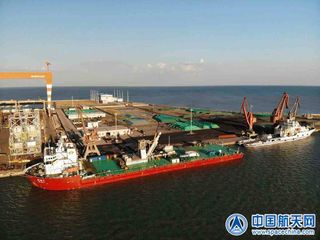China is planning to launch at least 3 rockets from the sea this year

China is looking to make full use of its newly-developed capability to launch from sea platforms with at least three such missions planned for 2021.
China first tested sea launches with a Long March 11 solid rocket in June 2019, sending seven satellites into orbit from a floating launch pad in the Yellow Sea.
A second successful sea launch of a Long March 11 rocket was carried out in September 2020, this time with nine satellites. Now, having also built new production and testing facilities on the coast of Shandong province in East China, the country is seeking to boost sea launches of the Long March 11.
Related: China kicks off a busy 2021 in space
"[This year], according to the needs of users and the safety requirements of landing areas at home and abroad, we plan to make one land-based launch, and three to four sea-based launches," Li Tongyu, chief commander of Long March 11 from the China Academy of Launch Vehicle Technology (CALT), told state media.
"We have overcome all the technical problems concerning different launching modes, including land- and sea-based launches," Li said. "We will gradually apply these technologies in the future to ensure that the launches are safe, reliable and cost-effective," Li added.
Launching from the sea holds a number of advantages for China. Flexible positioning of the launch site means it is easier to choose a flight path which doesn't fly over other countries and makes sure spent rocket stages and other debris fall into the sea rather than on land, as with many of China's launches.
Get the Space.com Newsletter
Breaking space news, the latest updates on rocket launches, skywatching events and more!
A mobile sea platform also allows launches closer to the equator. The greater rotational speed of the Earth near the equator means lower fuel requirements to achieve orbit.
Notably, footage of the first two sea launches show that the Long March 11 is "cold launched," meaning the rocket is first pushed out of its tube by gas before igniting its engines. The launch is also controlled remotely from a nearby ship to keep mission personnel far from danger.
Li said CALT is also developing a new, more powerful Long March 11A. This variant will use a larger, wider 8.7-foot (2.65 meters) diameter first stage and be able to send 3,300 lbs. (1,500 kilograms) of payload to a sun-synchronous orbit at an altitude of 435 miles (700 kilometers). These near polar orbits allow a satellite to pass over a point on the Earth at the same time every day.
This would make it capable of launching nearly four times the mass as a standard 6.5-foot (2 m) diameter Long March 11 to that orbit. The first launch is expected in 2022.
CALT is one of two main academies which make China's Long March rockets. CALT is also preparing for more than 10 missions of the Long March 3 series rocket, a launch vehicle which launches from Xichang in southwest China and is most often used to send satellites to higher, geosynchronous orbits used to place a satellite over a particular spot on the Earth. Many of these launches are expected in the second half of the year.
Because Xichang is deep inland, these launches see debris fall to the ground rather than the sea. Spent rocket stages sometimes threaten inhabited areas, but precautions are taken ahead of missions. CALT has also recently been experimenting with grid fins and parafoils to constrain the area of the drop zones for Long March 3B debris.
Overall more than 40 Long March launches are planned for 2021, the China Aerospace Science and Technology Corporation (CASC), China's main space contractor, announced in early January.
Follow us on Twitter @Spacedotcom and on Facebook.
Join our Space Forums to keep talking space on the latest missions, night sky and more! And if you have a news tip, correction or comment, let us know at: community@space.com.

Andrew is a freelance space journalist with a focus on reporting on China's rapidly growing space sector. He began writing for Space.com in 2019 and writes for SpaceNews, IEEE Spectrum, National Geographic, Sky & Telescope, New Scientist and others. Andrew first caught the space bug when, as a youngster, he saw Voyager images of other worlds in our solar system for the first time. Away from space, Andrew enjoys trail running in the forests of Finland. You can follow him on Twitter @AJ_FI.
